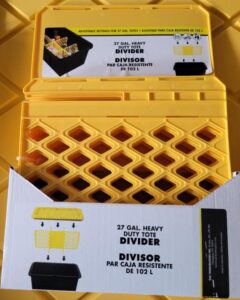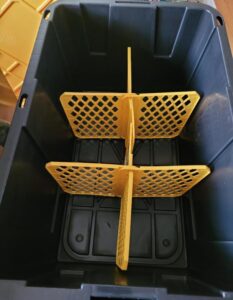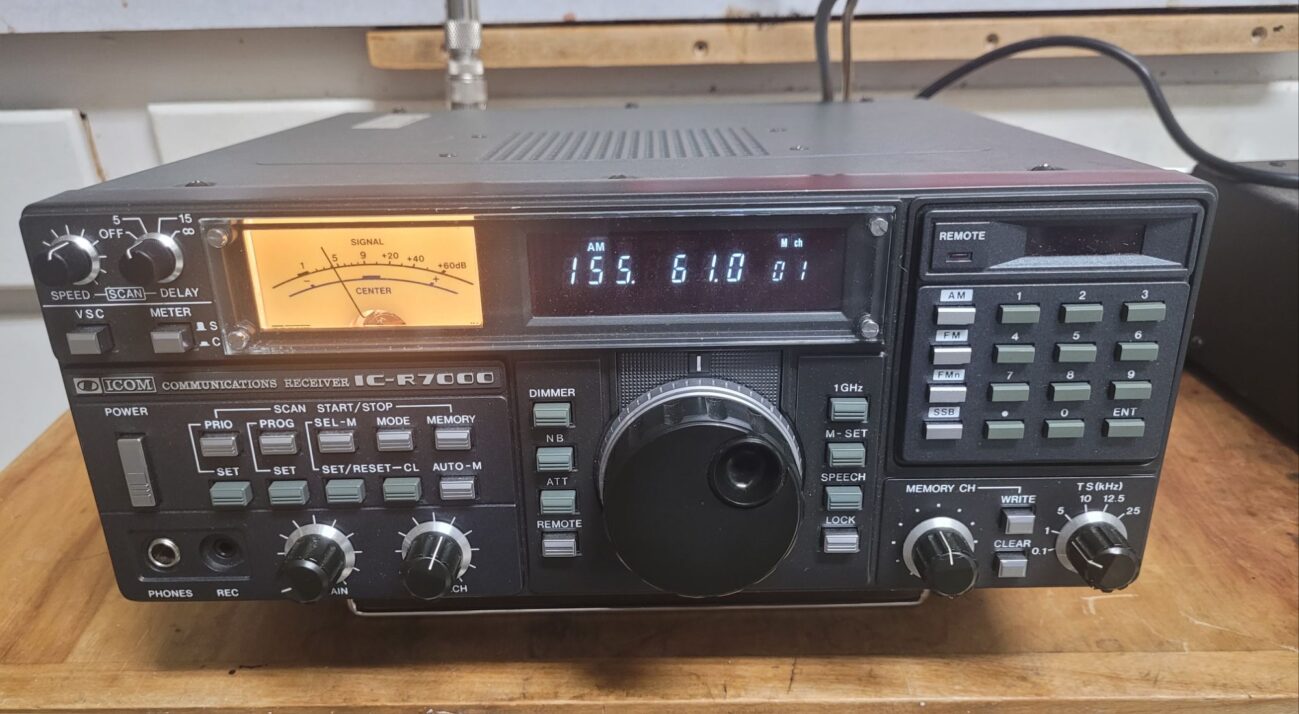You guys are familiar with these ubiquitous yellow-n-black 27-gallon totes, right? In my opinion, they aren’t the best totes from a survivalist standpoint but sometimes the not-best becomes the most ubiquitous and by virtue of that ubiquity it becomes the de facto ‘standard’. A good example of this would be the old VHS vs. Betamax war in the home video market back in the day…Betamax was a superior format, but VHS was cheap and it was everywhere…and it drove the better product into the dustbin of history.
So, I have a bunch of these totes for storing things I want to protect from..well..everything. What I did not know, but that I should have guessed, is that there is a surprising thrid-party market for accessories for these things. Case in point, I was up at Lowes picking up some things and saw these:
 A set of internal dividers for those yellow-black totes. I suppose you could whip up something similar using an Xacto knife and some heavy duty cardboard. But..I’ll take the easy way when I can. Assembling them and fitting them in the totes gives you this:
A set of internal dividers for those yellow-black totes. I suppose you could whip up something similar using an Xacto knife and some heavy duty cardboard. But..I’ll take the easy way when I can. Assembling them and fitting them in the totes gives you this:
 Handy for some needs. But as I mentioned, there’s a bunch of third-party support out there for these things.Another notable accessory, which is currently available at Costco (or, at least, my local CostCo)…a wire shelving rack.
Handy for some needs. But as I mentioned, there’s a bunch of third-party support out there for these things.Another notable accessory, which is currently available at Costco (or, at least, my local CostCo)…a wire shelving rack.
What is it I don’t like about these totes. Really, three big complaints: a) a more tactical color would be nice, although other companies do make versions of this in OD, though. 2) the tote tapers from the bottom to the top…the footprint of the bottom of the tote is smaller than the footprint of the top of the tote..like a funnel. This means stacking things uniformy is pretty much impossible. I understand why this situation exists – if the tote were straightwalled it wouldnt drop out of the mould as easily as a taperd design. But…still annoying. III) The lids for these are designed to facilitate stacking these totes, and thats a good thing, but the tradeoff is that lid will collect any liquid or debris that accumulates on top. Also, they really cant take too much weight on them. A couple of totes full of Christams lights and decorations? No sweat. Canned goods? Gonna be an issue.
But, as I said, the ubiquity of these totes, and their price point ($6.99@ at CostCo today) makes them the most common tote in this size that youre gonna find virtually everywhere. And, since these things are all over the place, with the large numbers out there the aftermarket sweeps in to bring us the aforementioned accessories.
Usually these totes are about $10 at most places, and my CostCo, as of late, haas them at $6.99. For that kind of money, theyre a nice way to keep stuff off the floor, outta the wet, free from dust, and just generally keep what limited space you have looking orderly.






